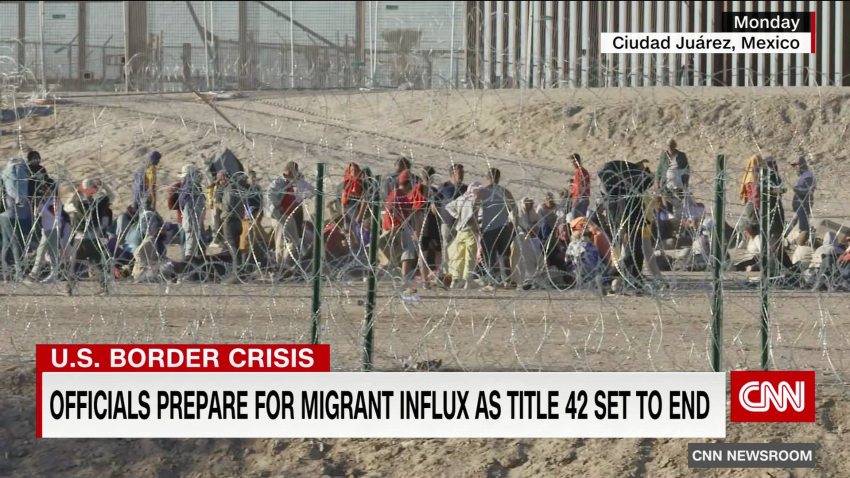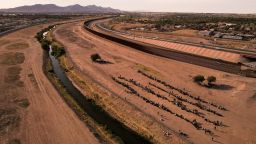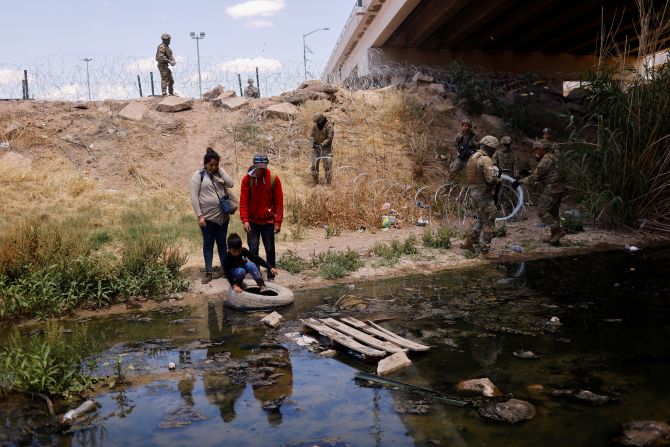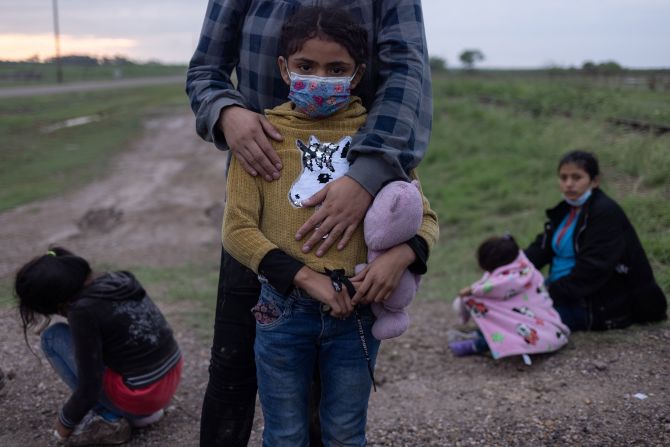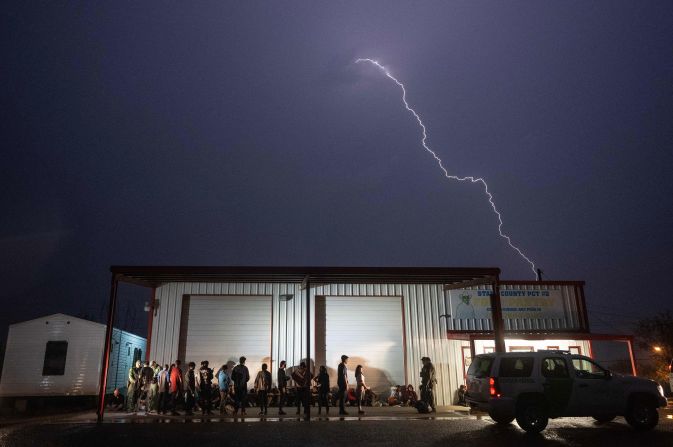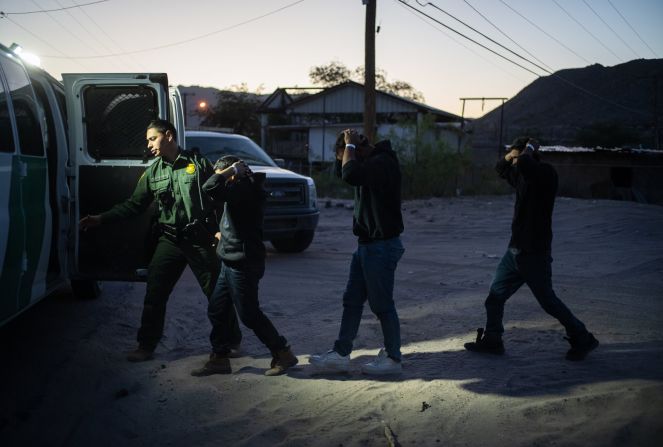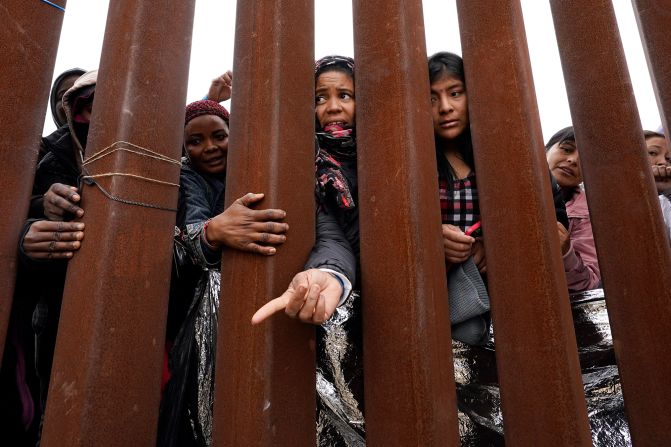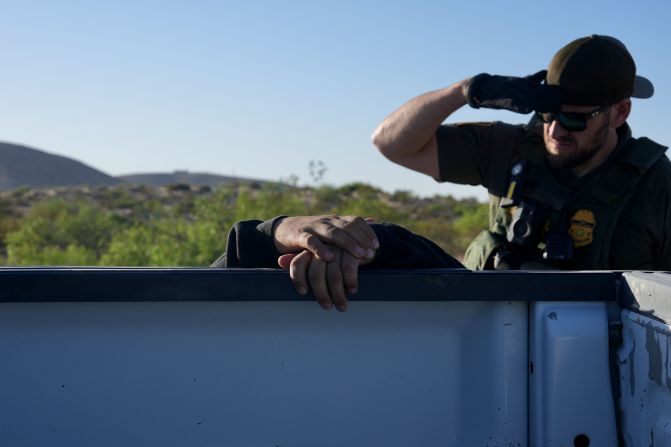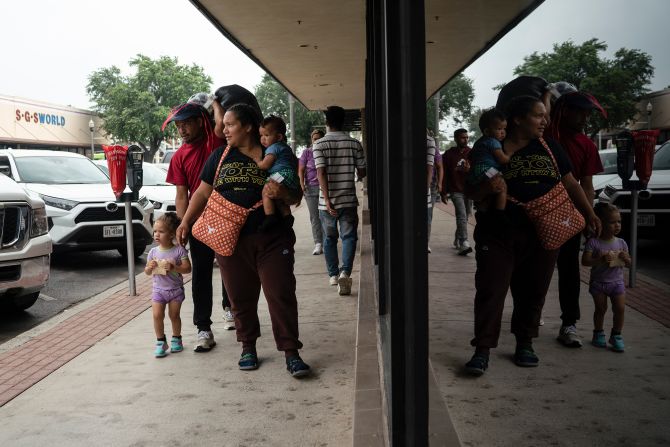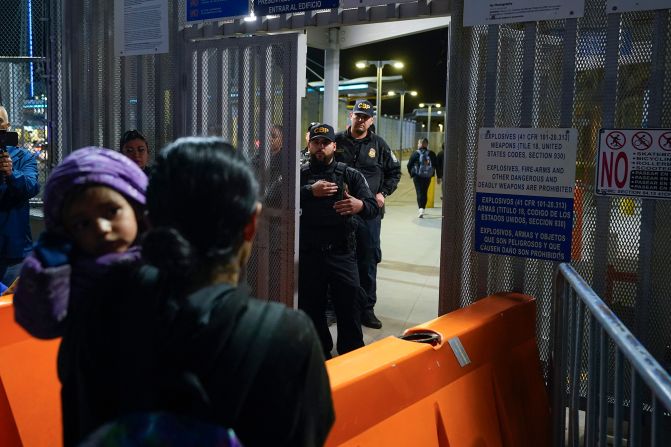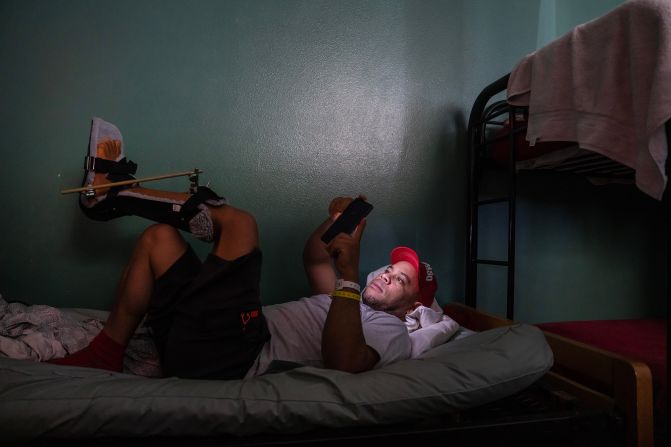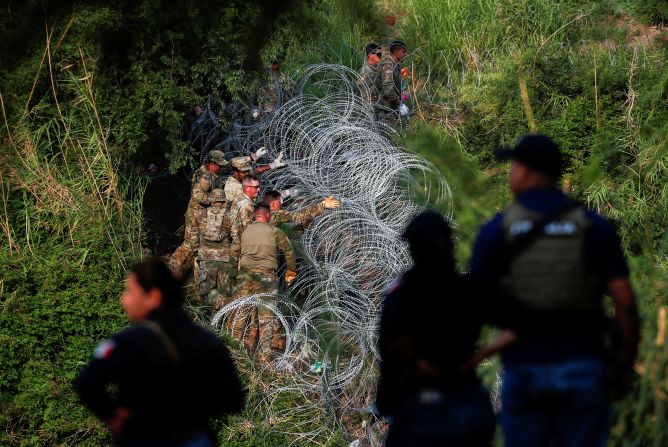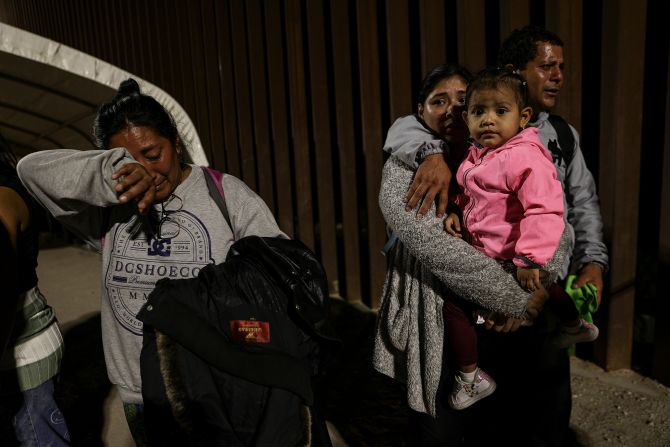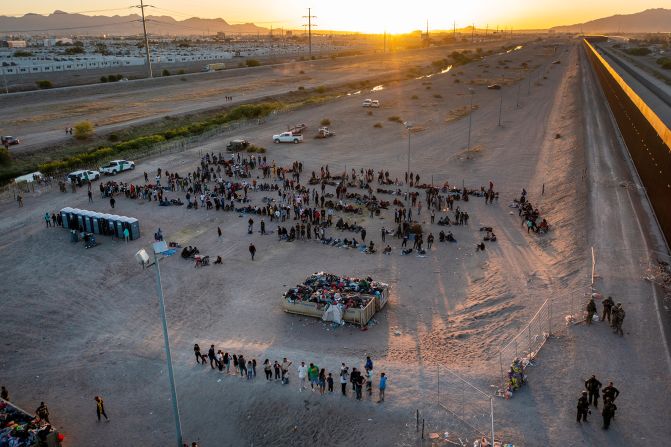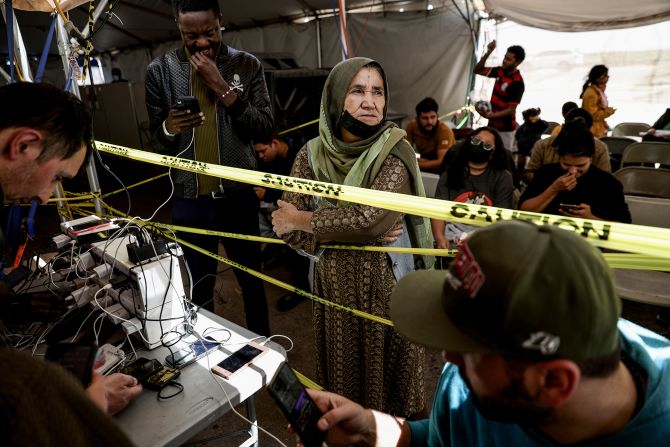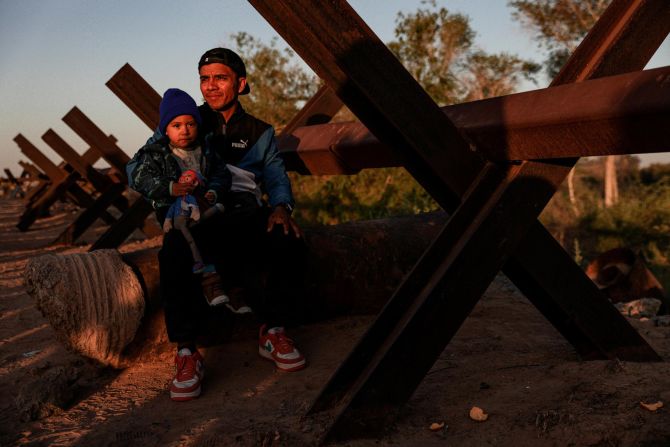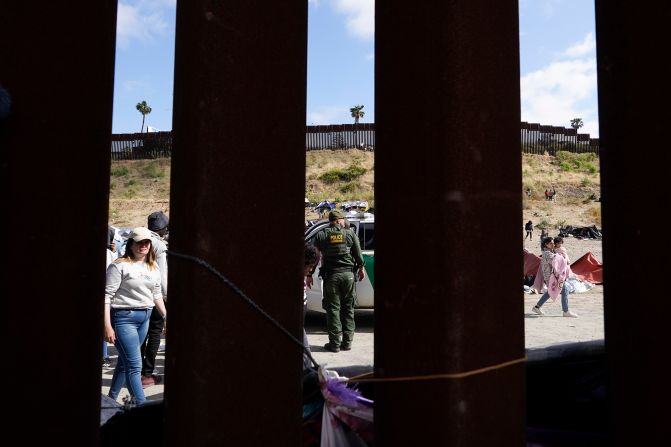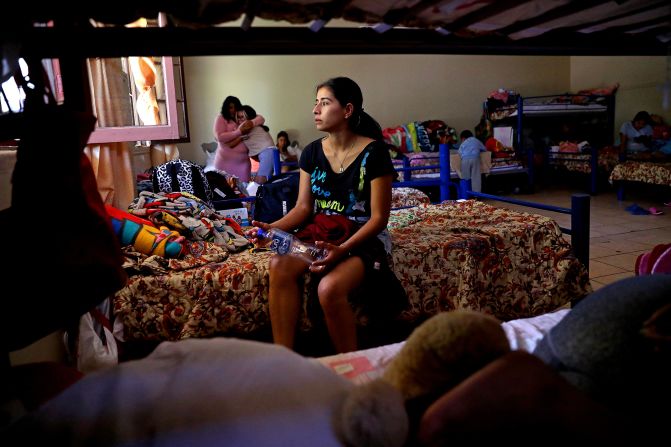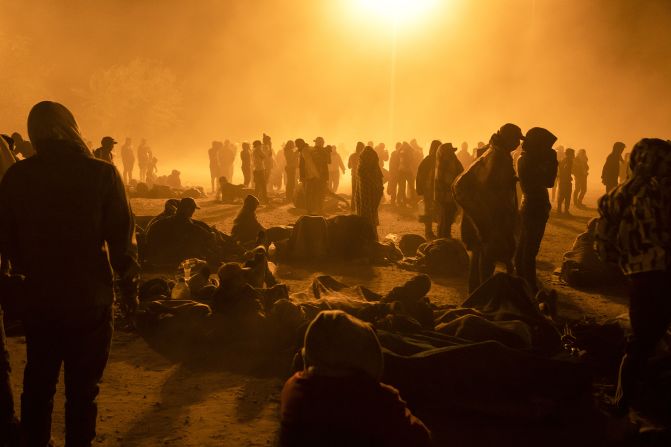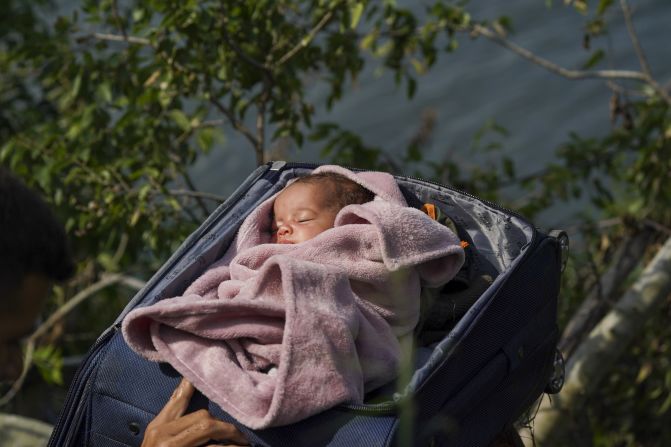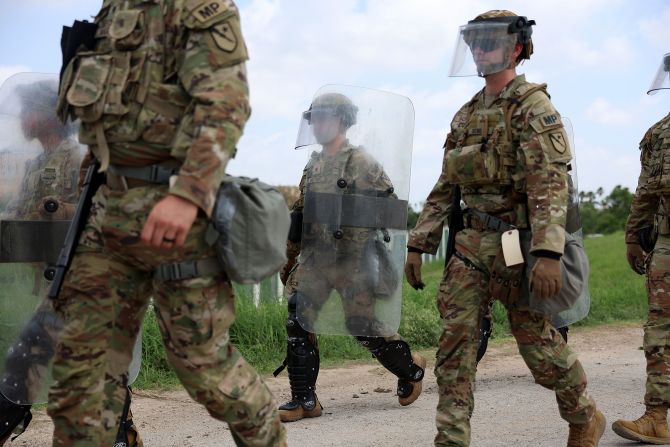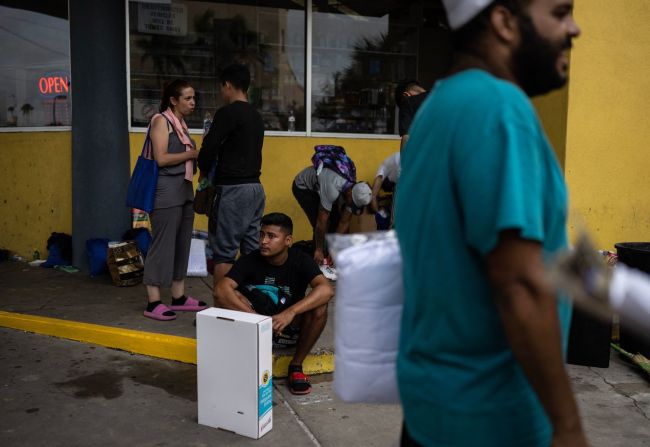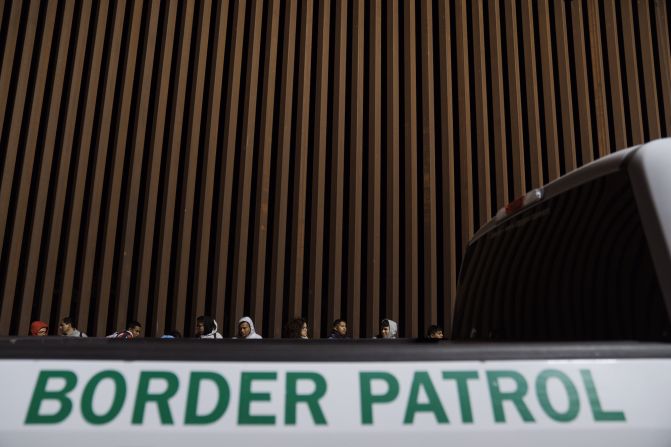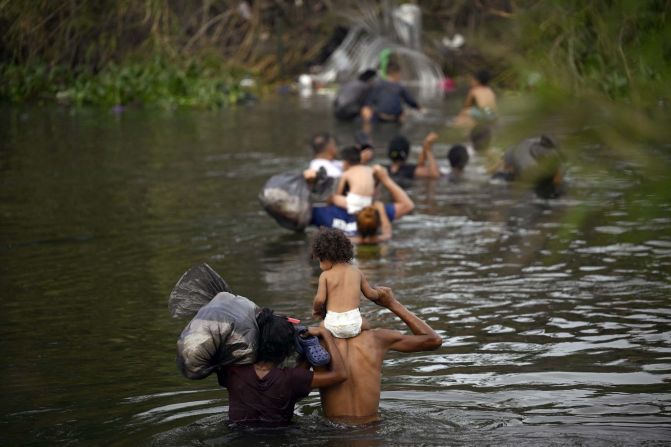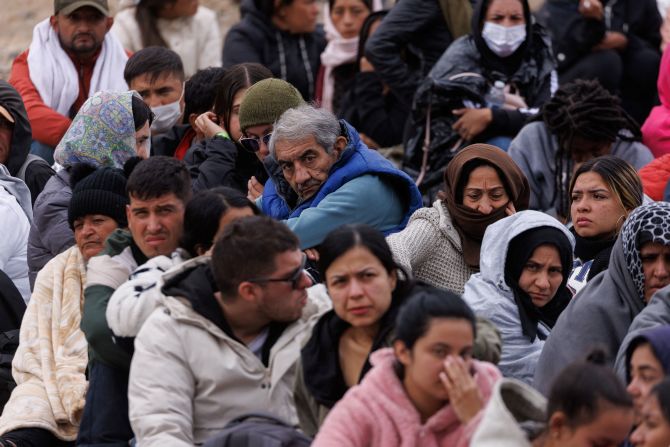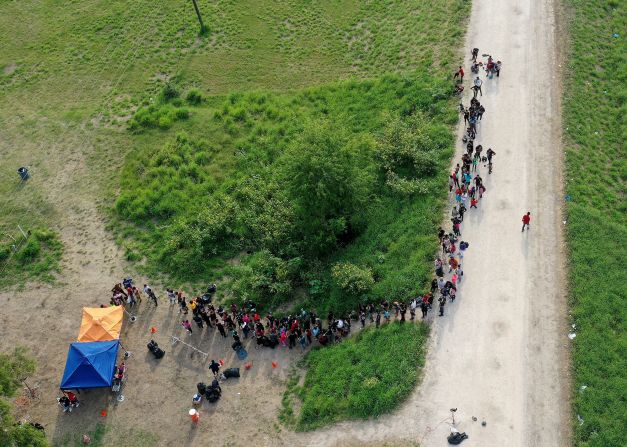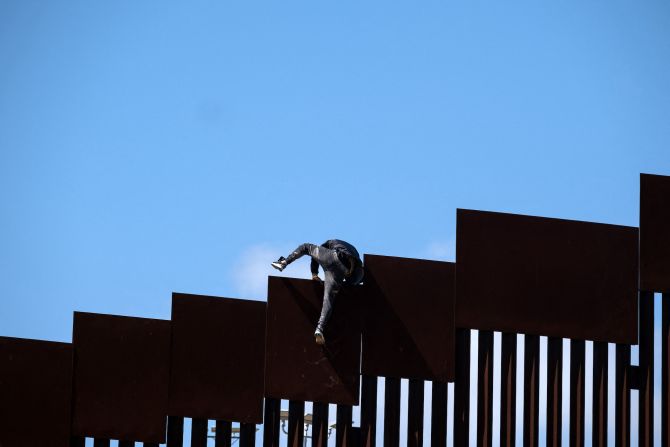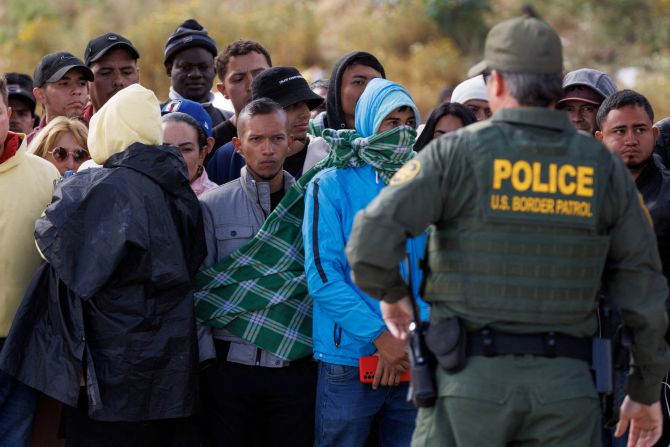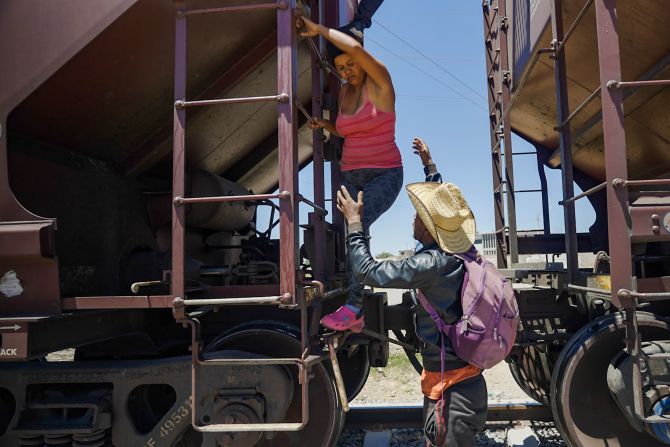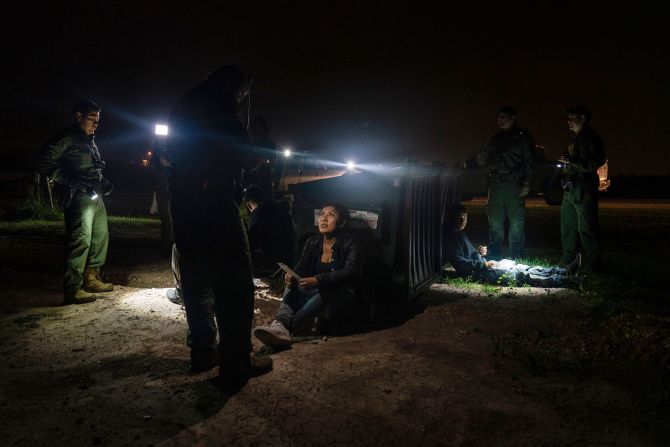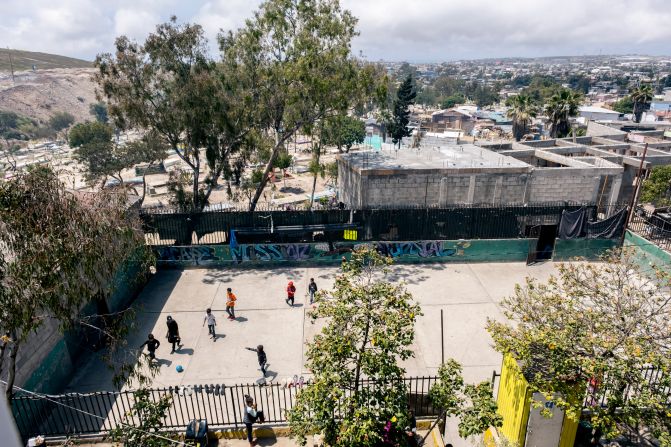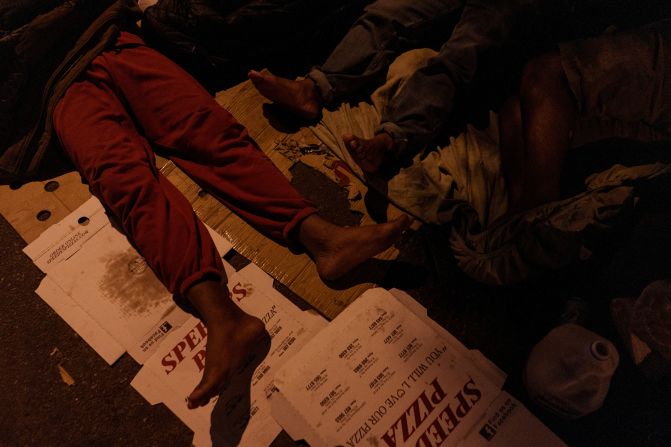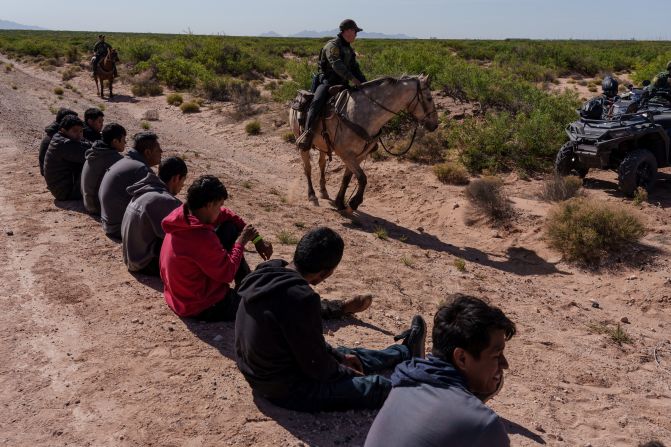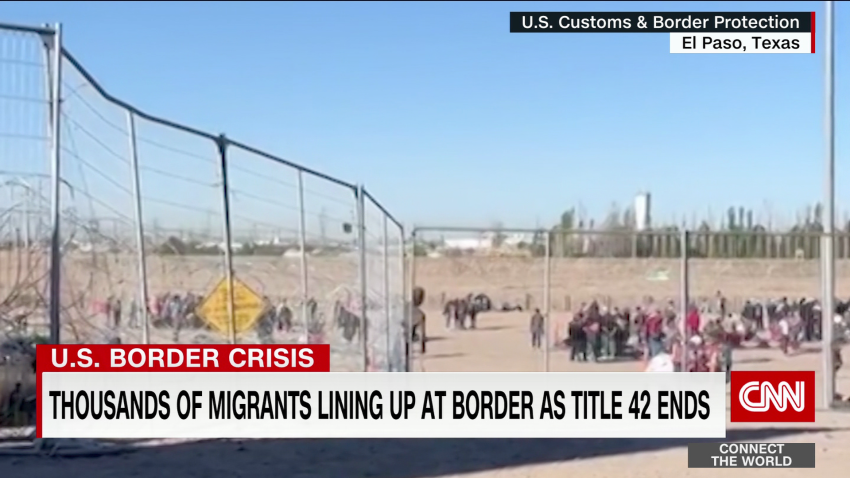Along border fences from California to Texas, crowds of undocumented migrants shelter in tents or queue in lines to be processed.
Many made long journeys on foot or boarded freight trains in hopes of reaching the other side of the border and applying for asylum.
“Can we make a little fire?” a couple from Colombia who were camped out near an El Paso border gate asked a guard member that was behind concertina wire. “We have a girl (daughter) who is very cold, she is shaking.”
Right next to them was another child, a 1-year-old girl, who was also cold.
As Title 42 expired late Thursday night, the US has sent thousands of reinforcements to the southern border, anticipating the Trump-era border restriction policy’s demise could spur an even heavier migrant influx than the country has already seen in recent weeks.
“It will get worse,” one Homeland Security official told CNN.
More than 1,400 Department of Homeland Security personnel and another 1,500 Department of Defense personnel are among those reinforcements, Homeland Security Secretary Alejandro Mayorkas said Wednesday.
About 1,000 asylum officers were being sent to Border Patrol and immigration detention facilities to help screen asylum requests, Mayorkas said. And US Secret Service agents and US marshals are being deployed to help border authorities, two Homeland Security officials told CNN.
That’s on top of the 550 US troops – mostly from the Army – that began a mission Wednesday to support Customs and Border Protection staff at the US-Mexico border, where officials said they’ll help monitor the border and provide data entry and warehouse support, but not perform law enforcement duties.
“We are clear-eyed about the challenges we are likely to face in the days and weeks ahead, which have the potential to be very difficult,” Mayorkas told reporters in Washington.
Follow live updates: Title 42 expires Thursday night
Title 42, a 2020 policy officials said was aimed at stopping the spread of Covid-19, allowed US authorities to swiftly return migrants encountered at the border to their home countries or send them back into Mexico, with some exceptions. Authorities have expelled migrants at the US-Mexico border more than 2.8 million times under Title 42 since the policy began, according to US Customs and Border Protection data.
The policy ended at 11:59 p.m. ET Thursday. Officials have been warning the expiration could attract a surge of migrants and worsen an already challenging humanitarian crisis at the southern border, where communities in recent days have seen makeshift encampments proliferate as border crossings climb.
On Thursday, Texas’ two southernmost counties, Cameron and Hidalgo, issued disaster declarations ahead of the expiration.
Title 42’s lapse “does not mean our border is open,” Mayorkas stressed Wednesday – authorities will lean instead on a decades-old protocol with a few new wrinkles. That protocol, while it could carry heavier legal consequences for those crossing unlawfully, often takes more time than Title 42 expulsions.
And a ruling from a federal judge in Florida on Thursday has curbed, in part, some of the Biden administration’s tools available, temporarily blocking the release of migrants from Border Patrol without court notices, according to a late Thursday court filing.
The Biden administration has been preparing to release some migrants who are apprehended at the border without court dates amid high border arrests, according to the Department of Homeland Security. As of Wednesday, there were more than 28,000 migrants in Border Patrol custody, stretching capacity.
The administration has previously released migrants without court dates when facing a surge of migrants after they’re screened and vetted by authorities. The latest move would release migrants on “parole” on a case-by-case basis and require them to check in with Immigration and Customs Enforcement. Some individuals may also be placed in alternative to detention programs.
Mayorkas said Wednesday it would apply to a “fraction” of the people encountered.
The state of Florida – which has previously taken issue with the release of migrants from custody – filed an emergency motion Thursday asking the court to temporarily block the administration’s plan. The ruling took effect Thursday at 11:59 p.m. ET, coinciding with the end of Title 42, and will expire in 14 days. The Biden administration is expected to appeal.
Over the last two days, border authorities reported taking more than 10,000 migrants into custody daily, marking a record for daily encounters and continuing an upward trend in border arrests.
Many heading to the US are making long and dangerous journeys in hopes of finding better, safer lives. Experts say migrants could be fleeing violence, immigrating for economic opportunities or to reunite with family members.
In pictures: The surge at the US-Mexico border
‘I can’t see a light at the end of the tunnel’
The Texas border city of Laredo prepared for the end of Title 42 “like there were a hurricane coming,” Mayor Victor Trevino told CNN Thursday.
There are safety concerns for the migrants themselves, the mayor said, noting that Laredo does not have a permanent pediatric intensive care unit.
“I don’t want to see any child get gravely ill and not be able to treat them,” he said.
“At the end of the day, what has always been a federal problem for decades now has become a local problem for our border communities,” he added, referring to the border crisis.
Read more
While the Texas border city of El Paso – which recently saw hundreds of migrants sleeping on sidewalks during a migration surge in the past week – prepares for another influx, a large concern is an apparent lack of a long-term solution, Mayor Oscar Leeser said.
“I can’t see a light at the end of the tunnel,” Leeser said in a Wednesday news conference.
Brownsville Mayor Trey Mendez told CNN his Texas city is “as prepared as we can be,” adding that while it’s unclear whether the lifting of Title 42 would result in higher numbers of migrants, the city “has been on the front lines of this issue for decades.”
Far from the southern border, New York has already been grappling with an increase in migrant arrivals.
On Wednesday, New York City Mayor Eric Adams signed an executive order suspending parts of the city’s right-to-shelter law – citing an expected influx of migrants. The law, when in force, requires the city to provide shelter to anyone who requests it, including migrants who’ve recently arrived.
“With over 130 emergency sites and eight humanitarian relief centers already opened, we have reached our limit, and this last week we had to resort to temporarily housing recent arrivals in gyms,” Adams’ spokesman Fabien Levy said, adding that the city has recently seen more than 500 migrants arrive each day.
Meanwhile, US Border Patrol Chief Raul Ortiz downplayed Thursday night’s Title 42 expiration, telling reporters Wednesday that the surge that was expected to happen after the expiry already occurred in the “last five to six days.”
“It’s not going to be such a significant draw on our processing resources,” Ortiz said. “I think our teams are going to be aptly prepared to be able to deal with those numbers.”
Still, political tensions have mounted over the country’s immigration system.
“Even after nearly two years of preparation, we expect to see large numbers of encounters at our southern border in the days and weeks after May 11 – we are already seeing high numbers of encounters in certain sectors,” Mayorkas said. “This places an incredible strain on our personnel, our facilities and our communities, with whom we partner closely.”
What it looks like along the southern border
About 155,000 migrants are estimated to be in shelters and on streets across northern Mexican states bordering the US, according to a source familiar with federal estimates.
“Like many others, we are looking for a better way of life. We’re looking for safety to go out in the streets,” migrant Marcela Aguilar told CNN affiliate KGTV in San Diego.
“Here, we can have a better future,” another migrant, Sergio Arias, told KGTV. “We won’t have to live in fear.”
In Brownsville, dozens of migrants – most of them Venezuelan nationals – were sleeping on a street early Thursday morning near a respite center and a bus station, where many have sought transportation north.
Some lay on cardboard, covered by Mylar blankets, while others slept on the ground in just the clothes on their backs. But just after 6 a.m., city officials woke them up to clear the area.
A Venezuelan migrant waiting in Brownsville – who asked that only his first name, William, be used – told CNN he came to the US border because he heard about the expiration of the pandemic-era immigration restrictions. But while being processed by immigration authorities, William says he lost track of his wife and two young children.

“I thought we would be reunited, but they just processed me, and then I had to go,” William told CNN Wednesday, speaking in Spanish.
Local officials and charity workers have been unable to help him find his wife, he said. “It’s been seven days. I am asking them where she is, and they say they don’t know.”
The expected surge may be fueled in part by misinformation from smugglers trying to exploit migrants for financial gain, Mayorkas has said.
“Smugglers have long been hard at work spreading false information that the border will be open after May 11 – it will not be,” Mayorkas said.
Advocates also say many of those who were expelled under Title 42 are growing desperate amid a dire situation.
Human Rights First says it’s identified more than 13,000 incidents of kidnapping, torture, rape or other violent attacks on migrants and asylum-seekers who were blocked in or expelled to Mexico under Title 42 since Biden took office.
Biden administration is planning policy changes

As the policy lifts, US officials will lean more on the decades-old Title 8, under which migrants could face more severe consequences for crossing the border unlawfully, such as being barred from entering the US for at least five years, they’ve said. Asylum-seekers who cross the border without first applying for asylum could be removed under Title 8 authority.
While Title 8 carries more legal consequences, especially for those caught a second time, processing times under that authority take longer than Title 42 expulsions and could strain already pinched resources.
“The transition back to Title 8 processing for all individuals encountered at the border will be effective immediately when the Title 42 order lifts,” the Department of Homeland Security said in a Wednesday news release.
The State Department plans to eventually open around 100 regional processing centers in the Western Hemisphere and “in the coming days” expects to launch an online platform for immigrants to make appointments, Homeland Security officials said.
The Biden administration is also rolling out a new program for migrant families released in the US to track them as they go through a speedy deportation process, including a measure that would require they stay under home confinement, according to multiple sources familiar with the plans.
In addition, a new regulation expected to go into effect this week would largely ban migrants who traveled through other countries on their way to the US-Mexico border from applying for asylum in the US – with some exceptions.
CNN’s Rosa Flores reported from El Paso, Texas, while Nouran Salahieh and Ray Sanchez wrote and reported in Los Angeles and New York. CNN’s Nick Valencia, Priscilla Alvarez, Catherine E. Shoichet, Andy Rose, Rob Frehse and Joe Sutton contributed to this report.

